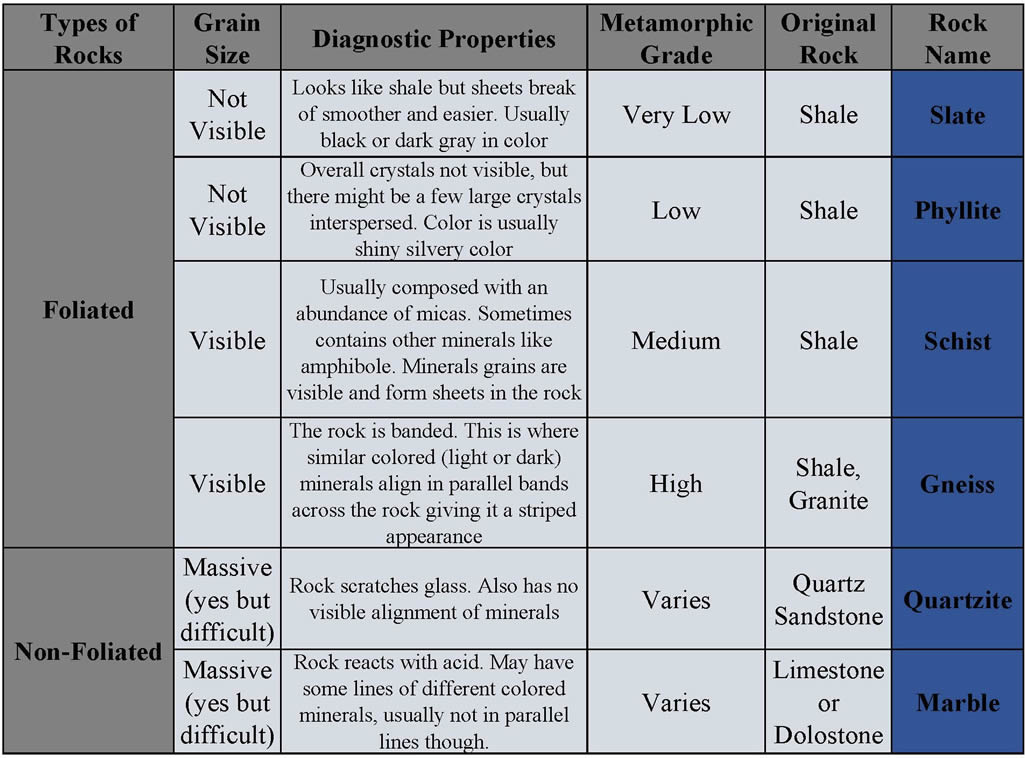-Stage 1.6-
Metamorphic Rocks
 Definition - Metamorphic rocks form from extreme heat and or pressure applied to any other rock. This can include igneous, sedimentary and even other metamorphic rocks.
Definition - Metamorphic rocks form from extreme heat and or pressure applied to any other rock. This can include igneous, sedimentary and even other metamorphic rocks.
Metamorphic Rocks
Metamorphic Rock Classification

There are 2 main types of sedimentary rocks
Foliated - These are rocks that form mostly from rocks with many types of minerals in them. During the process of metamorphism the minerals are aligned parallel to one another (aka foliation).
Slate - Looks like shale but sheets typically break off smoother and easier. Slate is also much harder and stronger than shale. Usually black or dark gray in color.
Phyllite - Overall crystals not visible, but there might be a few large crystals interspersed. Color is usually shiny silvery color.
Schist - Usually composed with an abundance of micas. Sometimes contains other minerals like amphibole, staurolite, garnet, etc. Minerals grains are visible and form sheets in the rock.
Non-foliated - These are rocks that formed from other rocks with usually just one mineral in them. They lack the alignment of the minerals and are usually just considered massive.
There are 3 principle types of metamorphism, all of which form different types of rocks:
Contact - This occurs over a very small area when magma comes in contact with the surrounding country rock.
Metamorphism type - High Temp
Regional - This occurs over a very large area when entire regions of rock are buried and subject to higher temperatures and pressure.
Metamorphism type - High Temp and High Pressure
Hydrothermal - This occurs when rock is subjected to heat (thermal) water (hydro) that continually flows through it. Most common in limestones.
Metamorphism type - High Temp
Definition: Metamorphic Grade - This is the degree of metamorphism the original rock went through. Very Low grade metamorphism still resembles the original rock while High grade metamorphism results in a rock where the original rock is impossible to determine.
Since 55% of all sedimentary rocks are shales and they are usually formed over large areas (think ocean basin or similar quiet water circumstances) that explains why most foliated rocks have shale as a parent rock.
Since the non-foliated rocks do not have any texture that define their degree of metamorphism, their metamorphic grade is usually impossible to determine unless it is extremely low.
Most hydrothermal metamorphic rocks do not have a high degree of metamorphism due to the temperature limits of the hydrothermal fluids.

